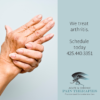
What is Runner’s Knee?
If you’re an athlete, you’ve probably heard of runner’s knee – a term used to describe pain around the kneecap. This condition, also known as patellofemoral pain syndrome, is commonly caused by overuse of the knee joint, resulting in inflammation and irritation of the tissues that surround the patella (also known as the kneecap). The most common symptoms of runner’s knee include pain around the kneecap, especially when bending the knee, during physical activity or after prolonged sitting. The pain is usually located at the front of the knee and might be accompanied by a popping or grinding sensation when moving the joint. While runner’s knee commonly appears in young and amateur runners, it can also affect experienced athletes and people who run long distances without proper rest and recovery. Other risk factors include weak quadriceps muscles or muscle imbalances around the knee, tight hamstrings or IT band, flat feet, and improper running shoes or terrain. Runner’s knee is usually treatable with rest, stretching, strengthening exercises, and pain management techniques. In some cases, physical therapy or orthopedic interventions might be necessary to alleviate the symptoms and prevent further damage.
Rest and Recovery
This might include reducing or modifying your running routine, avoiding activities that aggravate the pain, and adding more rest days between workouts. Ice packs, elevation, and compression might also be beneficial in reducing inflammation and discomfort.
Stretching and strengthening
Another important aspect of treating runner’s knee is stretching and strengthening the muscles around the knee joint. This might include exercises that target the quadriceps, hamstrings, glutes, and calves. A physical therapist can suggest specific exercises that match your condition and help you improve your muscle balance and flexibility.
Pain Management
Over-the-counter pain relief medications, such as ibuprofen or acetaminophen, can help alleviate the pain and reduce inflammation associated with runner’s knee. Topical creams or gels might also be beneficial in reducing pain and swelling. Orthopedic interventions – In some cases, physical therapy or orthopedic interventions might be necessary to alleviate the symptoms of runner’s knee. This might include wearing a knee brace or support, orthotics, or even surgery in rare cases. There are a number of pain treatments that don’t involve medication that can help diminish the symptoms of runner’s knee and potentially prevent it from recurring in the future.
One way to accelerate the healing process and prevent recurrence is via regenerative injections. These include PRP, BMAC, A2M, or other injections. Acute Pain Therapies has a subdivision that specifically specializes in regenerative medicine techniques. We strongly believe in these injections and try to make them comfortable via anesthetic techniques and relatively affordable because we find them to be so effective.
Prevention
While runner’s knee might be common among runners, there are several things you can do to prevent it from occurring. This includes gradual and safe progressions in your running routine, proper running form, wearing proper running shoes, and maintaining good muscle balance and flexibility. In conclusion, runner’s knee is a common and sometimes painful condition among runners, but it is usually treatable with rest, stretching, strengthening, and pain management techniques. It’s important to listen to your body, take rest days, and seek professional help if needed. With proper prevention and treatment, you can continue enjoying your passion for running without the pain of runner’s knee.
If you or someone you know is suffering from Runner’s Knee, schedule a consultation with Dr. Fisk.
Other articles about treatments for knee and joint pain can be found here:
Non-Operative Knee Pain: Treatments and Modalities that Work!






